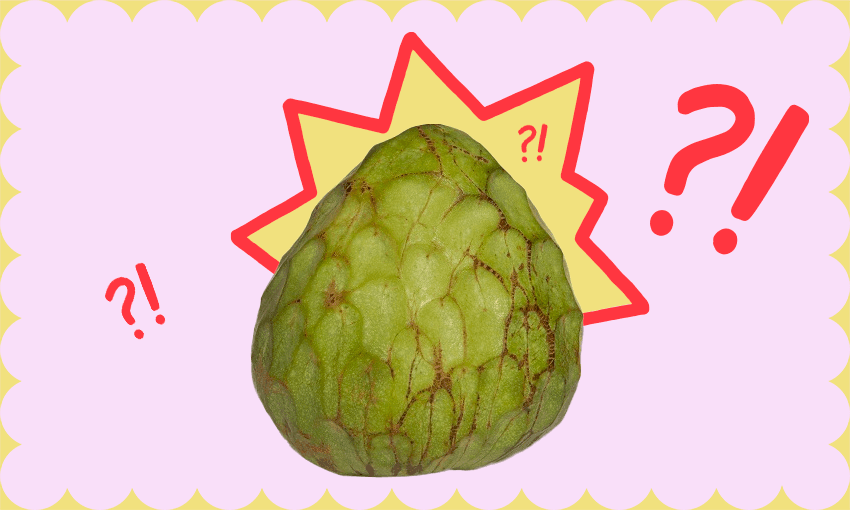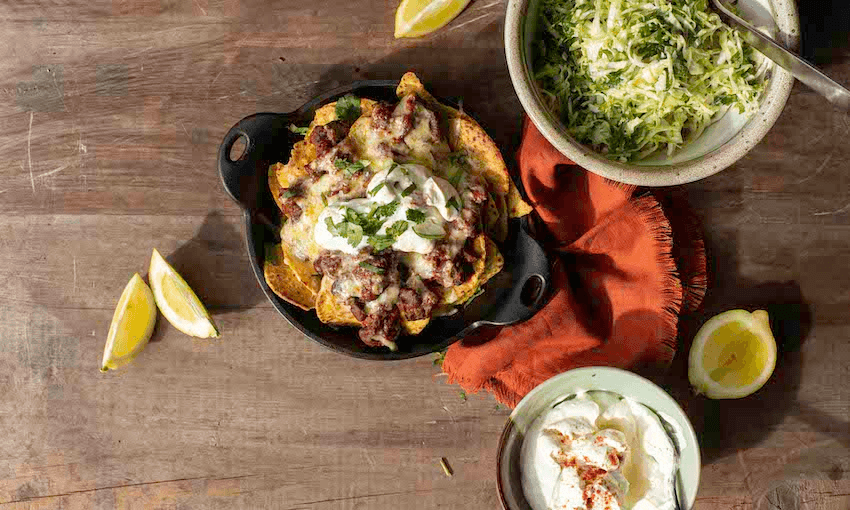Is there a better use for your cost-of-living windfall than spending some of it on a mysterious, much recommended and outrageously expensive piece of fruit? Charlotte Muru-Lanning has no regrets.
There are few things in life more thrilling than buying, carting home and tasting a fruit you’ve never encountered before – even if sometimes it’s a total flop.
Unlike most of our experiences that can be mediated by Google reviews, Rotten Tomatoes ratings or Instagram posts, there’s something truly instinctive about trying a fruit for yourself and figuring out whether you like it or not. Taste, especially when it comes to fruit, really is subjective – as someone who doesn’t like a lot of fruit, I know this all too well.
This particular fruit is one I’d seen mentioned repeatedly in a Twitter thread asking people to name their favourite fruit. Then I noticed it at my local grocer with an outrageous per kilogram price, and on multiple visits I left with a slight feeling of regret at not being spontaneous enough to buy one. Again, this weekend, the fruit was there next to the garlic and melons taunting me. But with a devil-may-care attitude and emboldened by the first cost-of-living payment in my bank account, this time I bought it.
If you’ve grown up overseas or spent a lot of time in tropical countries, you’ve probably come across this fruit before. But for many of us in Aotearoa, this green, armoured fruit with pudding-like pulp is something new. Here’s the scoop.
Right, what is it then?
The name’s cherimoya. But it can also be spelt chirimoya or chirimuya if you’re so inclined.
I swear that’s a custard apple?
Confusingly, people often call cherimoya “custard apple” because of its texture. But, cherimoya is actually part of the custard apple family, also called Annonaceaem, which includes other chunky pulpy fruits like paw paw, soursop, sweetsop, ilama, and, even more confusingly, custard apple.
Where do they come from?
They’re native to the Andean valleys of Peru and Ecuador, but they grow elsewhere too – including the warmer temperate parts of Aotearoa.
Where’d you find it?
I bought this one at Jadan, my local (and favourite) Asian grocer on Auckland’s Dominion Road. Lim Chour in Mount Albert sells them too, and you can find them on Facebook Marketplace and various other online fruit delivery services.
How much did it cost?
They were going for $24.99 a kilogram.
OK, so… how much did it cost?
$8.20.
For one piece of fruit?
Yes.
How many cherimoyas do I need to go without to afford a deposit on a home in Tāmaki Makaurau?
Based on the median house price of 1.2 million in the city, you’d need to cut back on around 14,634 cherimoya.
Surely one won’t hurt. How do you eat it?
Like all the best fruits, you can eat ripe cherimoya with a spoon, straight from the fruit itself. Simply slice the thing in half, remove the seeds, and use a spoon to scoop out the flesh. Alternatively, you can peel the fruit, cut it into cubes and remove the seeds. There’s also an abundance of recipes online, especially in the iced desserts realm. I particularly like the look of this cherimoya semifreddo or this relatively easy looking ice cream recipe.
Can I eat the seeds?
Please don’t eat the seeds. They’re poisonous if crushed open.
How do I know if it’s ripe?
It should be squishy to touch and, contrary to how we usually select our fresh produce – the skin should be slightly browned. If you’ve got a cherimoya that’s underripe, you can try these methods involving a paper bag or rice to speed up the ripening process.
Most importantly, what does cherimoya taste like?
In some places, Cherimoya is referred to as “the tree of ice cream”. When you taste it for yourself, it’s pretty easy to understand why. What’s particularly unique about the fruit is that while the taste is light and refreshing, it’s juxtaposed with a creamy, delicate, melt-in-your-mouth texture that really does feel reminiscent of ice-cream.
While taste-testing my $8.20 cherimoya, the collection of colleagues, flatmates and friends I offered scoops to picked up flavour profiles of banana, pineapple, mango, papaya, strawberry, melon, kiwifruit and, most delightfully, bubblegum – all within custard-like spoonfuls. Some, who’d tried cherimoya before (experts), remarked that they’d had better cherimoya than the one I’d chosen. Which leads me to believe that like most things in life, even if your first encounter with a cherimoya isn’t mind-blowing, there’s always next time.





